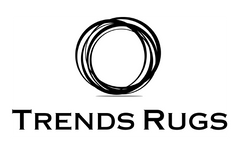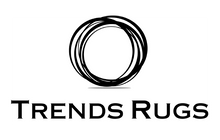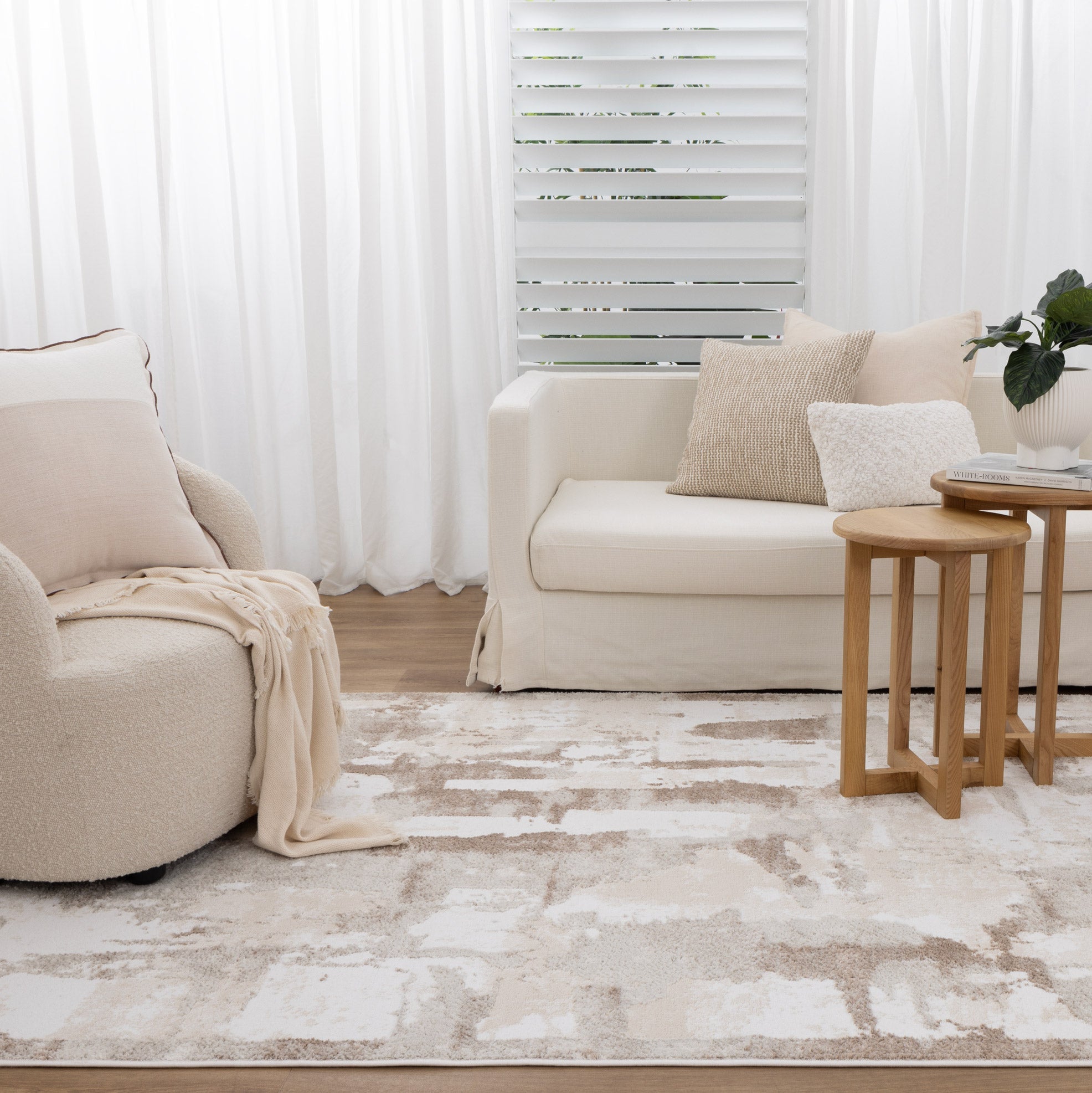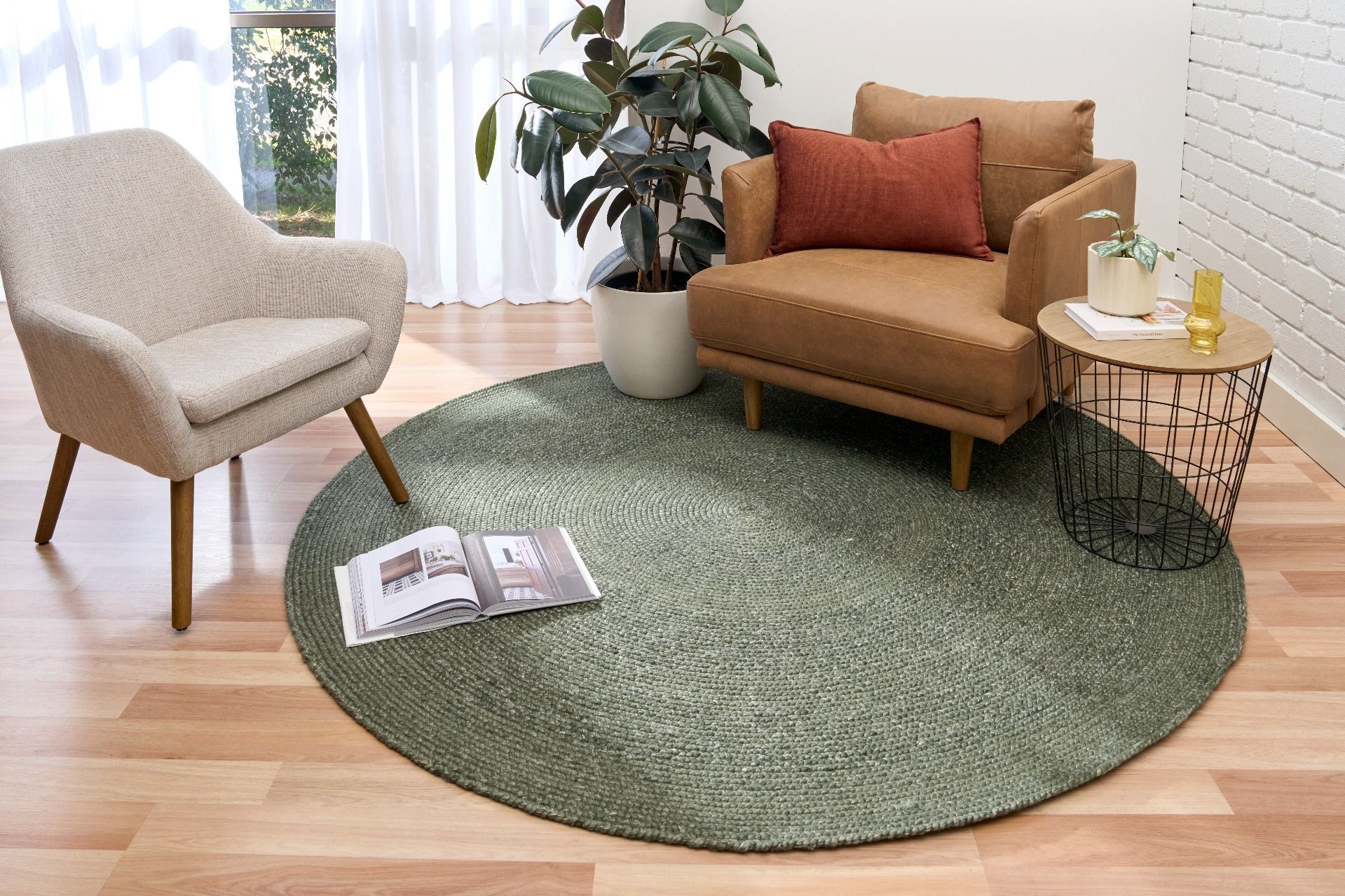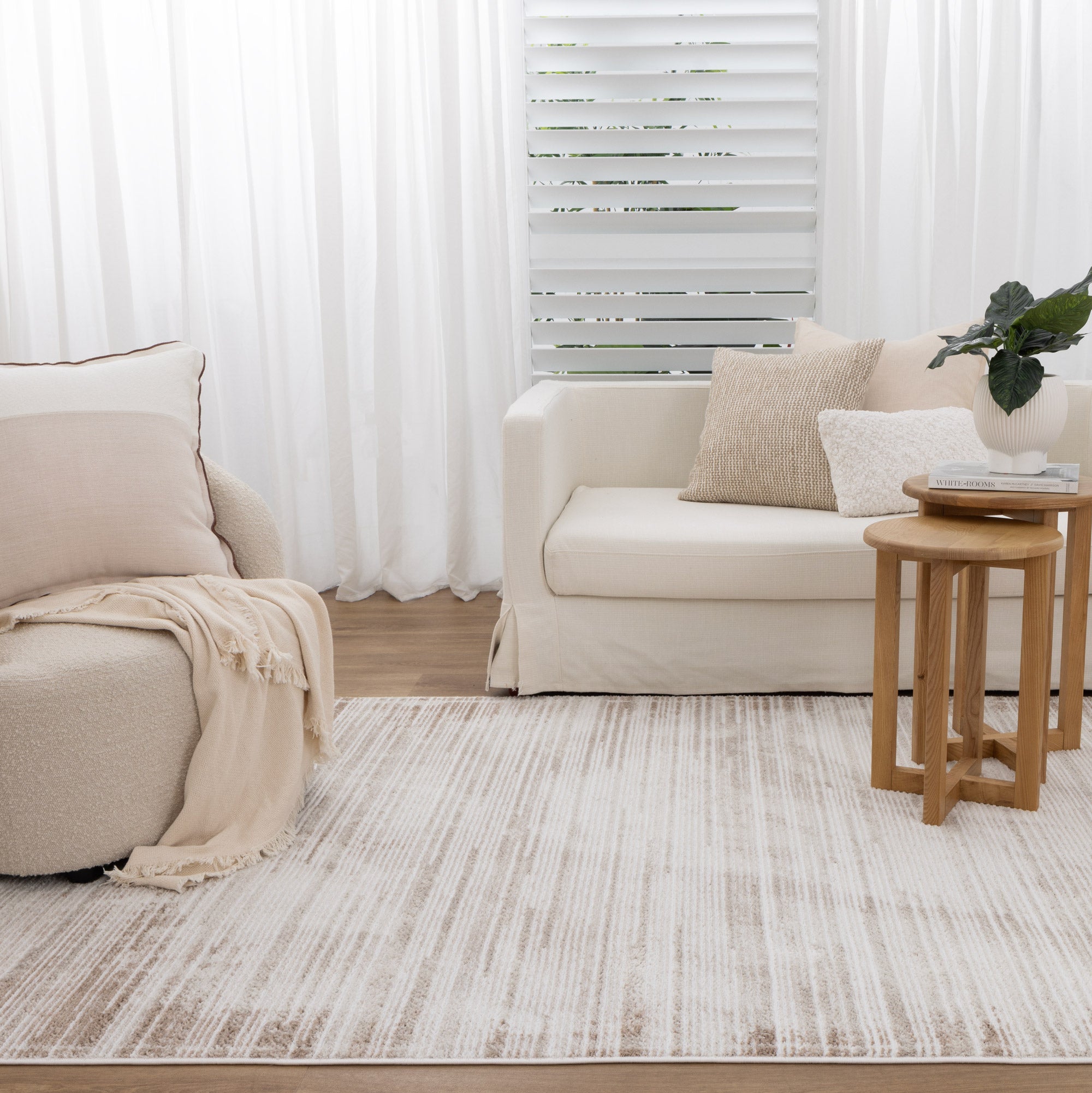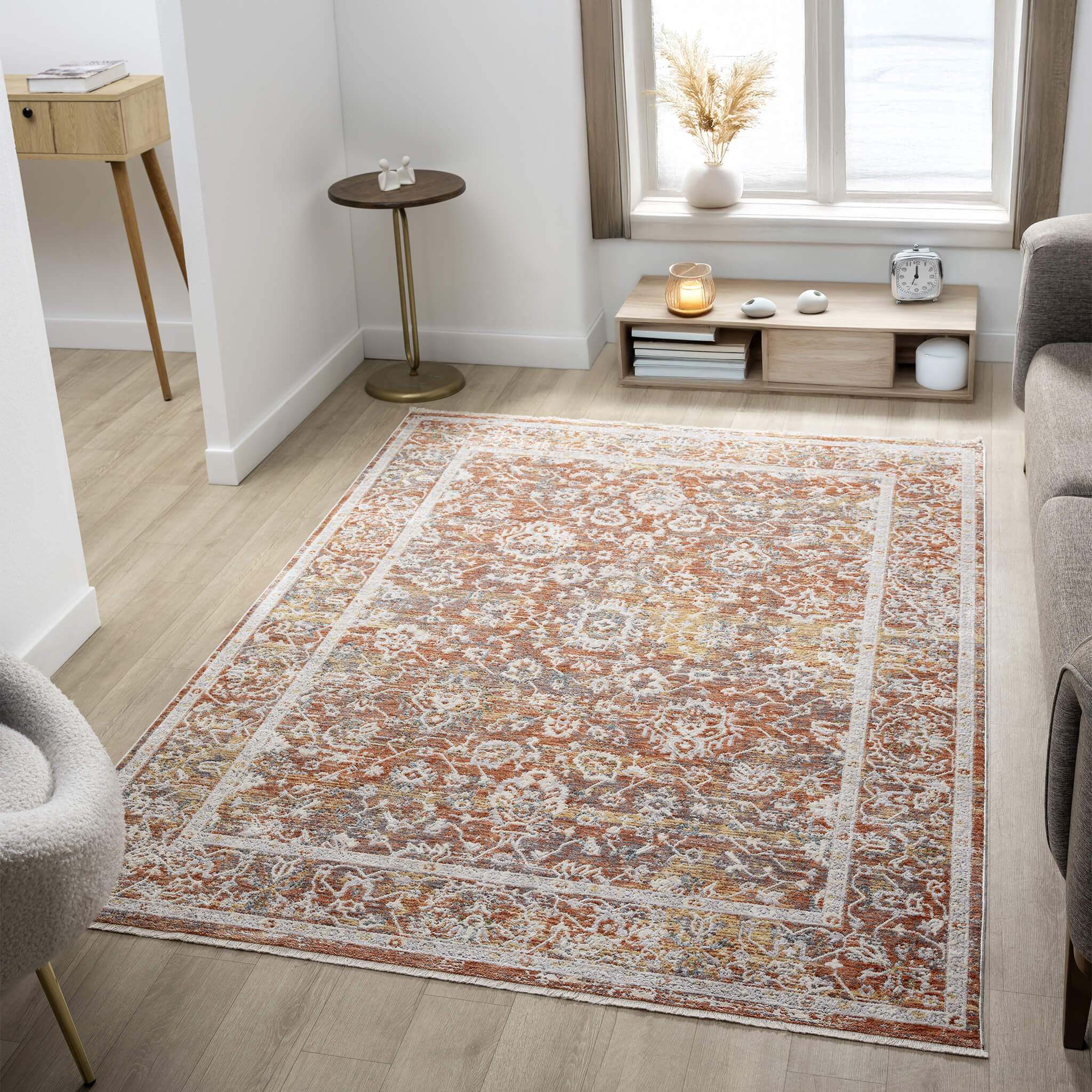Rug care and Maintenance Guide
There are three basic requirements for caring and cleaning of your carpet.Vacuuming Dry vacuum regularly – once a week is recommended.
Shedding is completely normal, especially for new rugs. It occurs when short fibres become loose from the pile. Wool and viscose rugs are naturally high-shedding, while polypropylene and polyester are low-shed options. Shedding should reduce significantly after a few months but may not stop entirely.
A new rug can have a musty or chemical odour from packaging. This is harmless and will fade after a few days to a couple of weeks once the rug is aired out in a well-ventilated space.
Creasing or curling is common in new rugs. To flatten it:
- Reverse-roll (back-roll) the rug and apply gentle pressure on the crease.
- Leave it rolled for a few hours or overnight.
- Exposure a warm room for a couple of hours can also help relax the fibres.
- Repeat if needed.
Yes. Rotate your rug 180 degrees every 3–6 months to ensure even wear and fading, especially in high-traffic areas or rooms with sunlight exposure.
- Use a canister vacuum without a beater bar, especially on wool or natural rugs.
- For delicate or handwoven rugs, use a handheld attachment or sweep with a broom.
- If reversible, vacuum both sides.
We highly recommend a rug underlay like Total Grip. It helps keep your rug in place, prevents slipping and wrinkling, extends its lifespan, protects your floors, and helps the rug maintain its shape.
- Roll, don’t fold.
- Wrap it in breathable material like cotton or muslin. For best results, use a polyurethane rug wrap.
- Avoid plastic, as it traps moisture.
- Store it off the ground in a cool, dry place and inspect every few months for signs of damage.
- Vacuum even when in storage every 3 months.
Yes—only when needed.
- Heavy-use rugs: Once a year.
- Light-use rugs: Every 2–3 years.
- Vacuum regularly to keep rugs looking fresh.
- For handmade rugs, always use a professional cleaner.
- Act quickly—blot, don’t rub.
- Use a dry cotton cloth or paper towel to absorb the spill.
- Work from the outer edge inward to avoid spreading.
- For residual stains, gently blot with a damp cloth using cold or lukewarm water.
Note: Viscose and Tencel rugs should never be cleaned with water or any liquid—use professional cleaning instead.
Fibre Types & Materials
There are many types of carpet fibers but the most common arenylon, polyester, polypropylene, acrylic, and wool.
Each has its strengths:
- Durable, stain-resistant, low-shed, fade-resistant.
- Rich colour, excellent texture, traditional look. Wool is luxurious but will shed and fade more over time.
Yes—all our rugs meet Australian safety standards and are non-toxic.
For young children, we recommend low-shed options like polypropylene or polyester. Always air out the rug before use, as some rugs may have a mild odour when unwrapped.
All of our rugs are non-toxic and comply with Australian laws for household safety.
This is normal, especially with handwoven rugs. Use a blunt object to gently tuck the tuft back in. Do not pull it out, as this may damage the weave.
Appearance & Usage
As lifestyles have changed, so has rug design—offering easy-care options, eco-friendly materials, and a wide range of textures and sizes to suit everything from busy family rooms to minimalist.
Our product images are taken in studio lighting, which can differ from the lighting in your home. Rugs may appear darker in low light or warmer tones under yellow lighting. Colour variation is a natural part of shopping for home décor online.
Rug fading is usually caused by prolonged exposure to sunlight, which breaks down the dyes in the fibres over time. Even indirect light through windows can lead to gradual discolouration. Other common causes include harsh chemical cleaners, frequent washing, and heavy foot traffic in certain areas. To prevent fading, rotate your rug regularly, use curtains or UV-filtering window film, and always follow the recommended care instructions.
No. Only rugs made specifically for outdoor use should be placed outside.
Our outdoor rugs are UV-stable (up to 100 hours) and moisture-resistant. For longevity:
- Use in covered areas.
- Keep as dry as possible.
- Dry flat with airflow if wet—avoid hanging to prevent warping
- Clean regularly.
- Store rolled in a shaded area when not in use.
- Avoid prolonged sun exposure to reduce fading
Final Tip: Keep It Clean
Treat your rug like a fine garment—check if it's wool, viscose, or cotton before deciding how to clean it. With regular care, your rug will look beautiful and last for many years.
